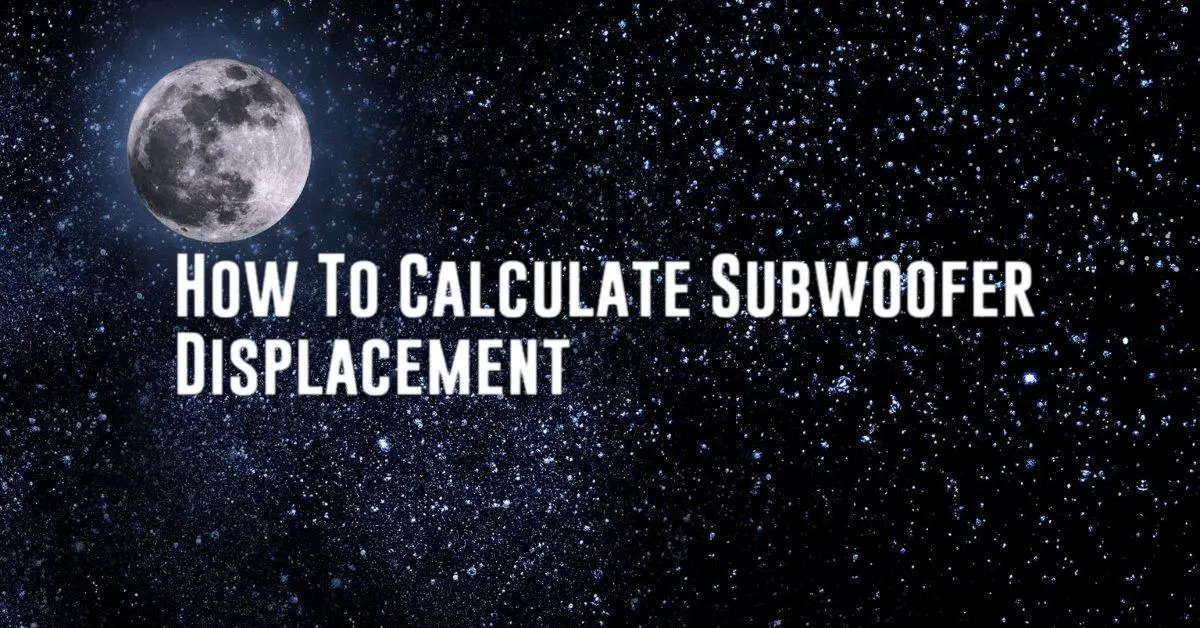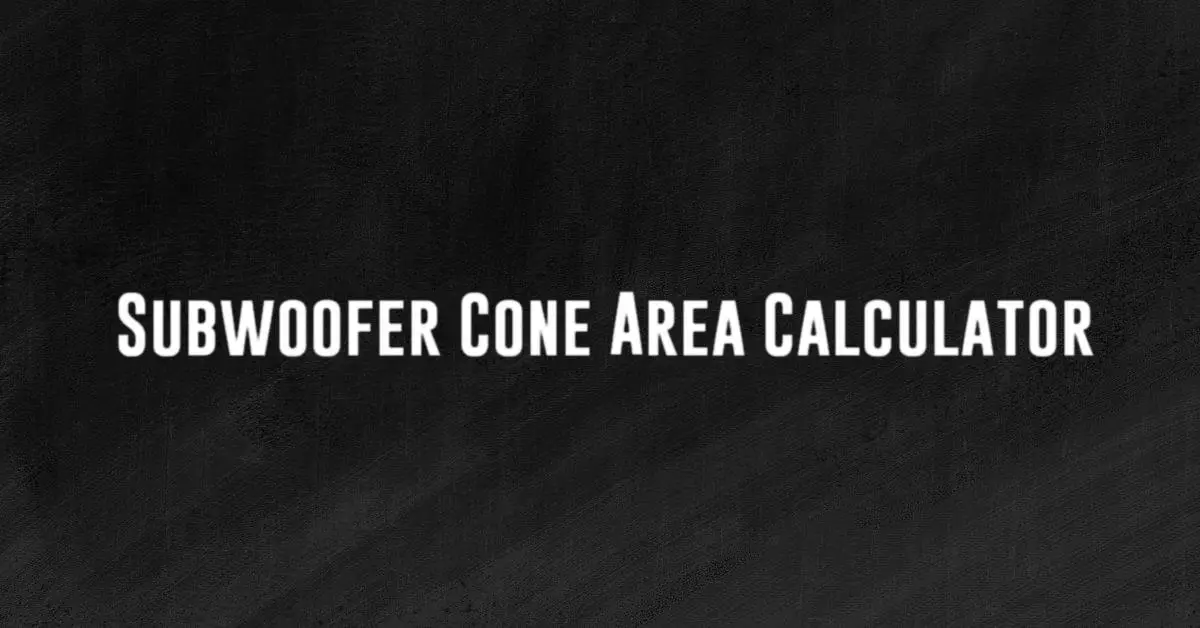What is Subwoofer Displacement and Why is it Important?
Subwoofer displacement refers to the amount of space that a subwoofer takes up in a speaker enclosure. This is an important factor to consider when designing and building a speaker system, as the displacement of a subwoofer can impact the overall performance and sound quality of the system. When a subwoofer takes up a significant amount of space in an enclosure, it can affect the airflow and acoustic properties of the enclosure, leading to changes in the sound output. Calculating subwoofer displacement is essential for determining the appropriate size and design of a speaker enclosure to ensure optimal performance.
How to Calculate Subwoofer Displacement
Calculating subwoofer displacement involves determining the volume of space that the subwoofer occupies in the speaker enclosure. This can be done by measuring the dimensions of the subwoofer and then using these measurements to calculate the displacement volume. Here’s how you can calculate subwoofer displacement:
1. Measure the Dimensions of the Subwoofer

Start by measuring the diameter of the subwoofer cone. This measurement will be the diameter of the circle that the subwoofer cone occupies. Next, measure the depth of the subwoofer from the front of the cone to the back of the magnet. These measurements will be used to calculate the volume of the subwoofer.
2. Calculate the Volume of the Subwoofer
To calculate the volume of the subwoofer, you will need to use the formula for the volume of a cylinder, which is given by the equation V = πr^2h, where r is the radius of the cone (half of the diameter) and h is the depth of the subwoofer. Plug in the measurements that you took in the previous step to calculate the volume of the subwoofer.
3. Calculate the Displacement Volume of the Subwoofer
The displacement volume of the subwoofer is the total volume of space that the subwoofer occupies in the speaker enclosure. To calculate the displacement volume, you will need to subtract the volume of the subwoofer from the total internal volume of the speaker enclosure. This will give you the remaining volume available for the subwoofer to occupy.
Why is Subwoofer Displacement Important for Speaker Design?
Subwoofer displacement is an important factor to consider when designing a speaker system because it can affect the overall performance and sound quality of the system. When a subwoofer takes up a significant amount of space in the enclosure, it can impact the airflow and acoustic properties of the enclosure, leading to changes in the sound output. By calculating subwoofer displacement, you can ensure that the subwoofer is properly accommodated in the speaker enclosure to optimize performance and sound quality.
Factors to Consider When Calculating Subwoofer Displacement
When calculating subwoofer displacement, there are several factors to consider to ensure accurate measurements and calculations. Some of the key factors to keep in mind include:
1. Subwoofer Cone Size
The size of the subwoofer cone plays a significant role in determining the displacement volume of the subwoofer. Larger cones will take up more space in the enclosure, resulting in a higher displacement volume.
2. Subwoofer Depth
The depth of the subwoofer from the front of the cone to the back of the magnet also impacts the displacement volume. Deeper subwoofers will take up more space in the enclosure, affecting the overall volume available for the subwoofer.
3. Speaker Enclosure Size
The internal volume of the speaker enclosure is another essential factor to consider when calculating subwoofer displacement. The total internal volume of the enclosure should be large enough to accommodate the subwoofer without restricting airflow or affecting sound quality.
Conclusion
Calculating subwoofer displacement is a crucial step in designing and building a speaker system to ensure optimal performance and sound quality. By measuring the dimensions of the subwoofer and calculating the displacement volume, you can determine the appropriate size and design of the speaker enclosure to accommodate the subwoofer effectively. Taking into account factors such as the subwoofer cone size, depth, and speaker enclosure size will help you accurately calculate subwoofer displacement and create a speaker system that delivers exceptional sound performance.






